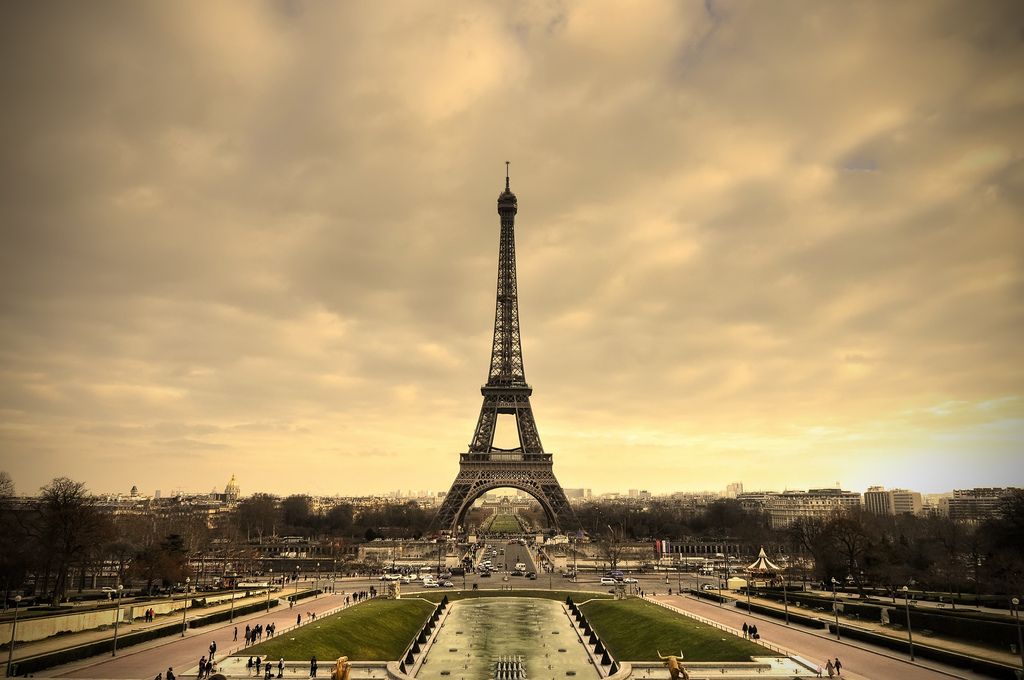
I am going to start a new section on this website today about traveling. I have visited around 250 cities in 11 countries to date, so I guess I have enough material to start. My first post is about one of the most popular destinations in the world, and a must-visit city in anyone’s list: Paris. Since there is too much to see in the city, I decided to break down this Paris guide in 3 parts:
- Basics about Paris, how to get in, basic sightseeing and public transportation.
- Detailed information about each district (arrondissement), including lodging, restaurants and museums.
- Interesting things to do outside Paris while you are there.
Understanding Paris
Paris is the capital of France and the most populous city in the country. Its origins trace back to the 3rd century BC, as the Celtic town of Parisii. In the 1st century BC, it was conquered by the Romans and it became a garrison-town called Lutetia. Later, it was christianized in the 3rd century AD and it became the capital of France in 987. In the 12th century, Paris was the largest city in the western world and one of the most influential cities in Europe. It was the birthplace of Gothic Architecture and the center stage for the most important events in French history: Enlightenment and the French Revolution. Today, it is still a very important world center of commerce, finance, arts and culture.
Paris is organized into 20 districts (Arrondissements in French), numbered from 1 to 20 in a clockwise spiral starting at the Kilometre zero, in front of the Notre Dame cathedral. Most of the tourist attractions are located in arrondissements 1 to 11.
The city has a maritime climate, with cool winters and warm summers. Although it may happen, it is not common to find extreme temperatures in Paris. The average temperature in the winter is above freezing and the summer is usually pleasant, with lows around 15ºC and highs of 25ºC. The best times of the year to visit the city are the spring and autumn, with mild daytime and fresh nights.
Paris is a very expensive city — transportation, museums, gifts, food, hotels. Even for French luxury brands, it is more expensive than the U.S., so I don’t advise shopping there. Restaurants are expensive, but they often offer 2-3 course menus, which are better value for money. There are also plenty of decent street foods, so fast food chains like McDonald’s are really the last resort. Nevertheless, budget accordingly. A minimum of €50.00/day (excluding lodging costs) is reasonable.
It is a myth that no one speaks English in Paris. Most people in touristy locations will speak English and, in fact, they will talk to you in English even if you speak French very well. Nevertheless, it never hurts to know some basic phrases just to play on the safe side.
Paris is very cosmopolitan and is much more like New York City than other European cities. Jaywalking is common (and dangerous for unaware pedestrians). Everyone is in a rush, just like in Manhattan, which makes people think that Parisians are too rude. Although there is some truth to that, if you behave well and show good manners, people will usually be helpful. Courtesy is very welcome everywhere in France, not only in Paris. So, just be polite and you will be fine. If you behave like a prison ward, you will get reciprocal treatment. Also, never block the path of others with luggage on the train (aisles or seats), or on escalators (always leave the left side clear for those in a rush). That really annoys people, myself included.
The city is also very conservative in its “dress code”. Bright colors and sportswear is a sure way to scream “tourist”. If you want to blend in, try a more classic look. Business casual usually works fine. Blending in reduces the chances of being a target for criminals and scammers in the city’s tourist traps.
Paris is one of the safest big cities in Europe. The biggest issues are pickpocketing and scams. Be on alert in crowded areas (Tour Eiffel, subways, Sacré-Coeur and Notre Dame) and avoid the local RER B to/from CDG — prefer the express that stops only at Gare du Nord, which are faster and safer. Avoid carrying backpacks on your back, especially in the subways. I prefer a messenger bag, which I can keep close to my body. Also, never use your back pockets for wallet, money and phone, and avoid using smartphones on the public transit system. Scammers are all around Paris, but they act especially around the Sacré-Coeur. Just ignore them and keep walking. Another thing to avoid is drinking at the bars in Montmartre — they are known to rip-off tourists. The police is everywhere and is usually very helpful, so if you feel threatened, just talk to an officer and report anything suspicious.
Traveling into Paris
If you are abroad, you will probably get to Paris via its international airport, Charles de Gaulle (CDG). The airport has three terminals and it is one of the most confusing and most uncomfortable airports in the world. Terminal 2, in particular, is subdivided into 7 sub-terminals (2A to 2G), so pay attention to where you depart/arrive. All the terminals are connected by the CDGVAL shuttle train, which is free. Everything else is very expensive at CDG, especially food. And if you are using Terminal 1, be advised that all the food courts are located before the security checkpoint.
When traveling to CDG, I recommend Air France, since this is the main hub for the company. They have great lounge space at Terminal 2 and a priority security line (Sky Priority) for first/business class travelers and Skyteam elite members. If you are a Star Alliance frequent flyer, you will be using Terminal 1.
The airport is well-served by mass transit. You may get to/from Paris via the RER B commuter train, at stops CDG-Terminal 1 and CDG-Terminal 2. Be advised that the CDG-Terminal 1 station is actually at Terminal 3, so you will need to use the CDGVAL shuttle to get to Terminal 1. Very user-friendly, no? Trains leave every 8 minutes and take 35 minutes to reach Gare du Nord, the first station in Zone 1 (central Paris). This is, by far, the fastest way into the city. Just take care of your stuff on the train, as it runs through some rough suburbs between CDG and Paris. Tickets cost €9.75 per person and trains usually leave from platforms 11 and 12. Always keep your tickets with you, as it is usual for the SNCF officials to inspect tickets at this station.
Another option is to use the Air France bus (Les Cars Air France). There are 2 lines that serve Paris:
- Line 2 — CDG – Porte Maillot – Etoile/Champs-Elysées: final stop near the Arc de Triomphe, at 1 Avenue Carnot (€16.20).
- Line 4 — CDG – Gare de Lyon – Gare Montparnasse: final stop near Gare Montparnasse, at Rue du Commandant Mouchotte (€16.60).
There is also a third line (Line 3) that connects the two airports (CDG and OLY). Buses leave every 30 minutes and take around 60 minutes to the city, if there is no traffic. However, you will always hit traffic at rush hour, so unless you really want to ride the bus, take the train. An exception for this rule is when you are taking too much luggage with you. The Paris metro system is handicap-enemy and you will find a lot of stations with no elevators or escalators, which may complicate your trip to/from the airport when using the RER B.
Taxis are too expensive (€60 to/from Paris) and the drivers are often rude and don’t speak any language besides French (sometimes, they hardly speak French). So stay away from them. If you really need a car, you may try your luck with any of the luxury car services at the airport (€150 to/from Paris).
If you are arriving at Orly airport (OLY), you may also use the options mentioned above. RER B to OLY stops at Antony and the Air France bus has a line that leaves from Etoile/Champs Elysées. If you are using the RER to go to OLY, pay attention to its direction. You want to go to the Saint-Rémy-les-Chevreuse branch, not Robinson.
In case you are heading to Paris by train, you may use the Paris public transit system to get to your final destination. All train stations are connected to the Metro/RER.
Never go to the city by car. It is just impossible to find a place to park.
Sightseeing
The best way of getting to know Paris is walking. If you have time only to see the main landmarks, then there is a one-day walk for you. I call it the Paris Main Axis walk and it will cover all the landmarks in the city. It goes like this:
- Start at the Notre Dame cathedral (RER B Saint Michel-Notre Dame, or M4 Cité). This is the city’s ground zero.
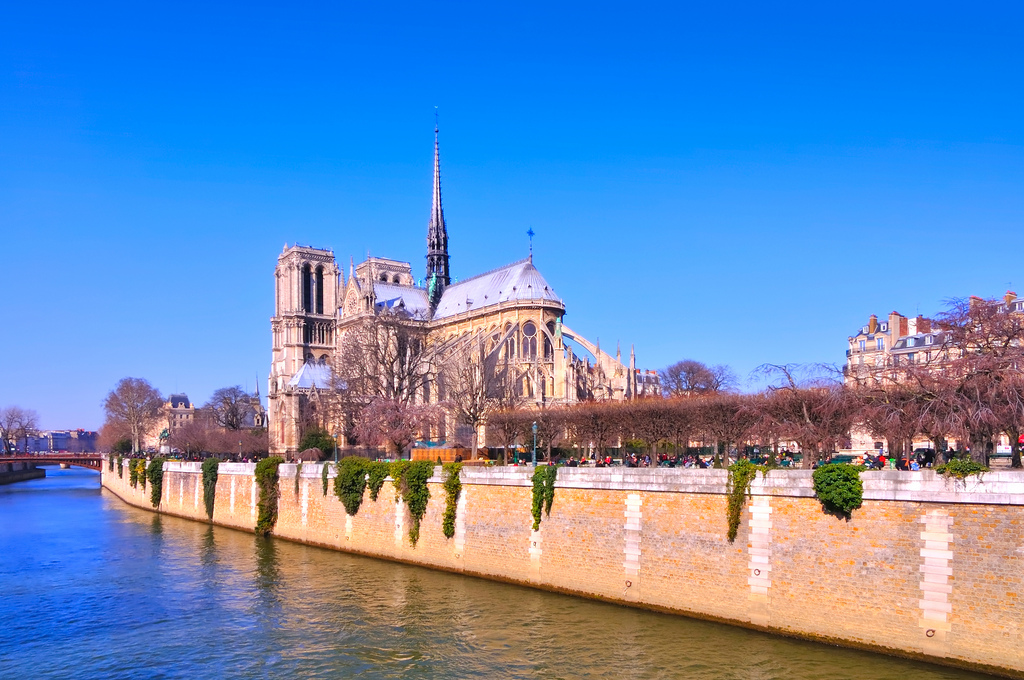
Cathédrale Notre Dame de Paris
- From there, go north and cross the river. You will see the city hall (Hôtel de Ville) to your right.
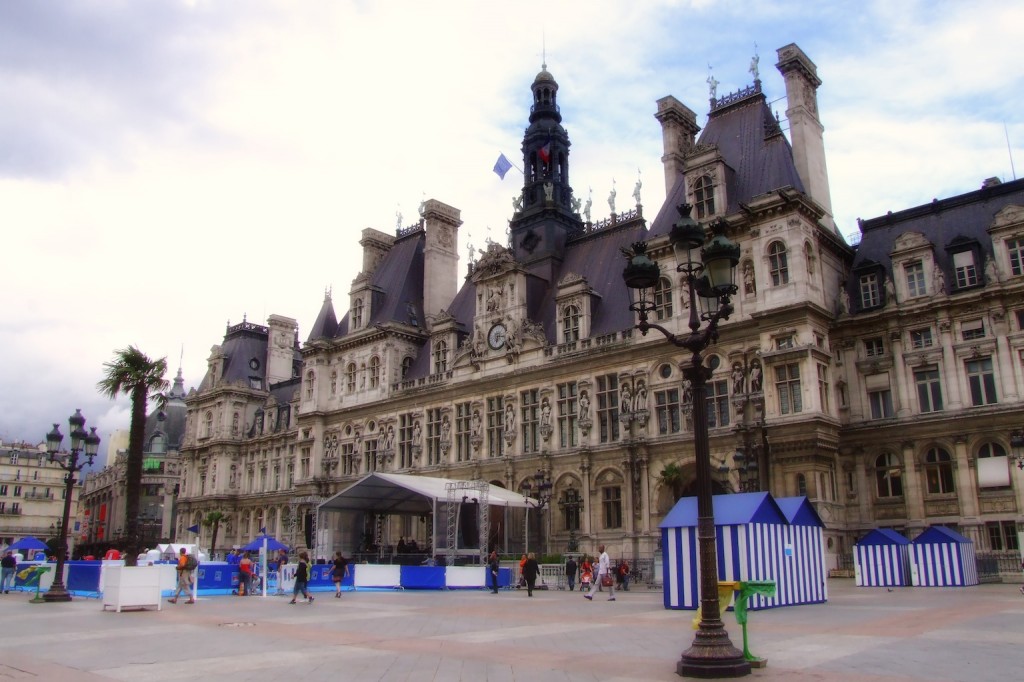
Hôtel de Ville
- Go west, following the Seine river. You will see the Conciergerie on the island and Pont Neuf right ahead.
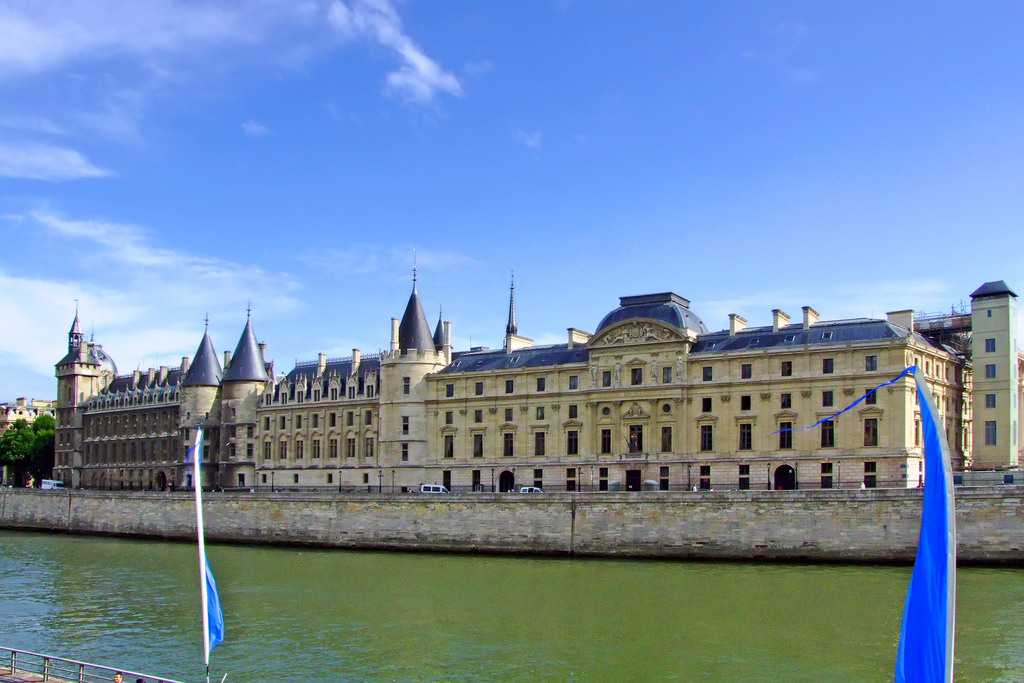
La Conciergerie
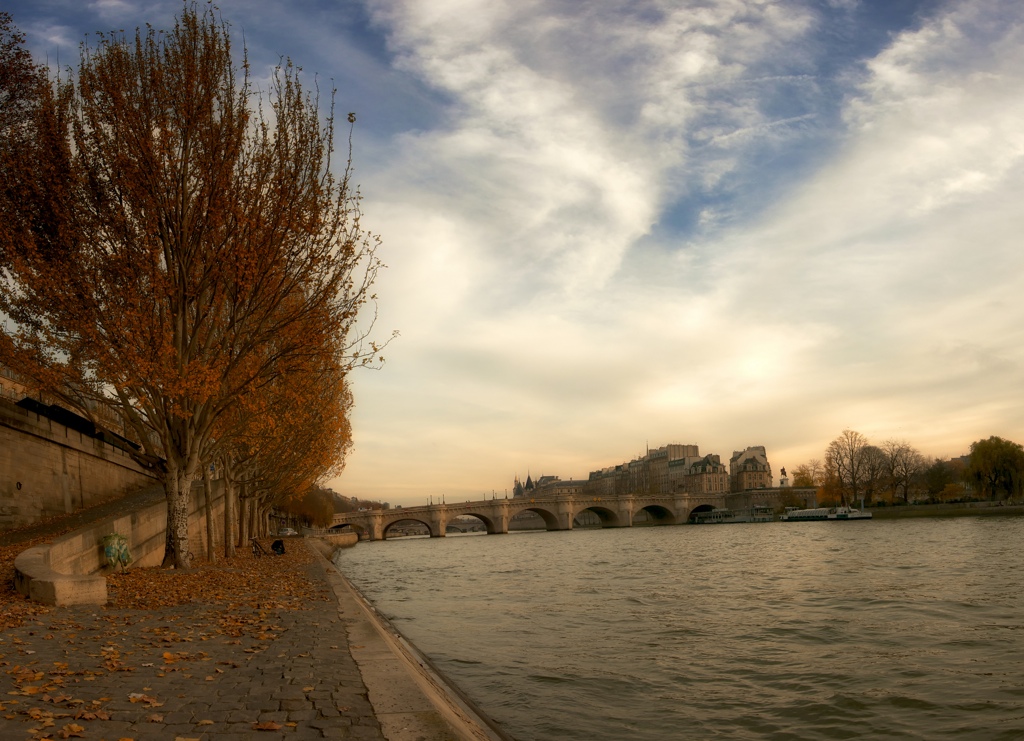
Pont Neuf
- Continue following the river until you get to Pont des Arts and then cross the street into the Louvre.
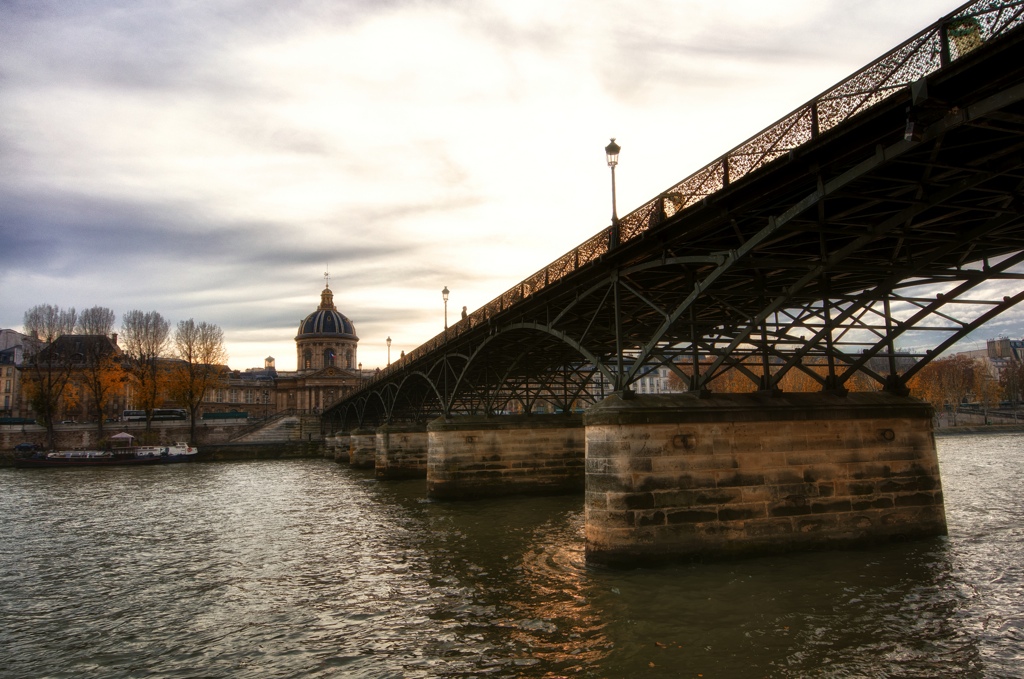
Pont des Arts
- You will arrive at Cour Carée. Go left to the Louvre pyramid.

Musée du Louvre
- Keep going east towards the Arc de Triomphe du Carrousel.
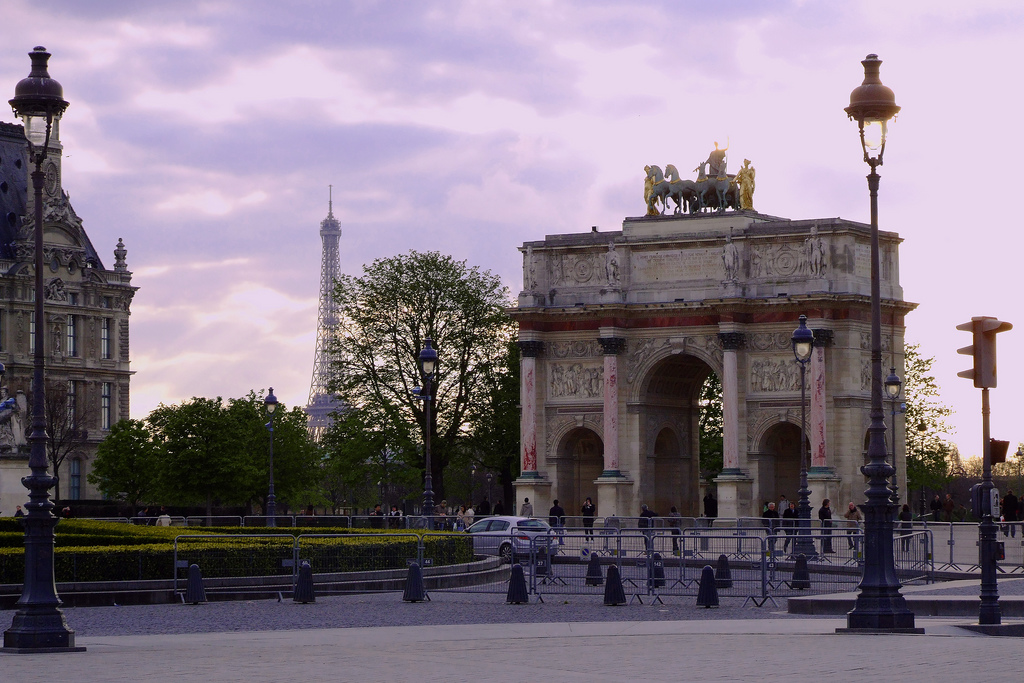
Arc de Triomphe du Carrousel
- Go straight on and cross the Jardin des Tuileries.
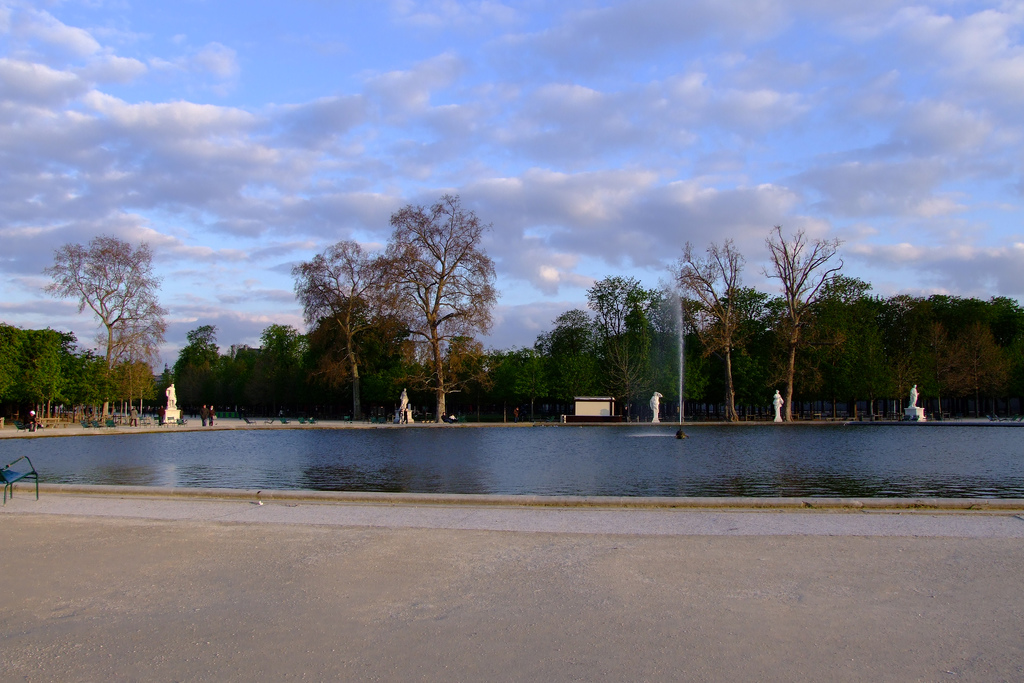
Jardin des Tuileries
- That ends at the Place de La Concorde. From there, you will walk straight on towards the Arc de Triomphe on the Avenue des Champs-Elysées. But, before that, go south to the bridge over the Seine. From that bridge, you can see another famous Parisian bridge: Pont Alexandre III.
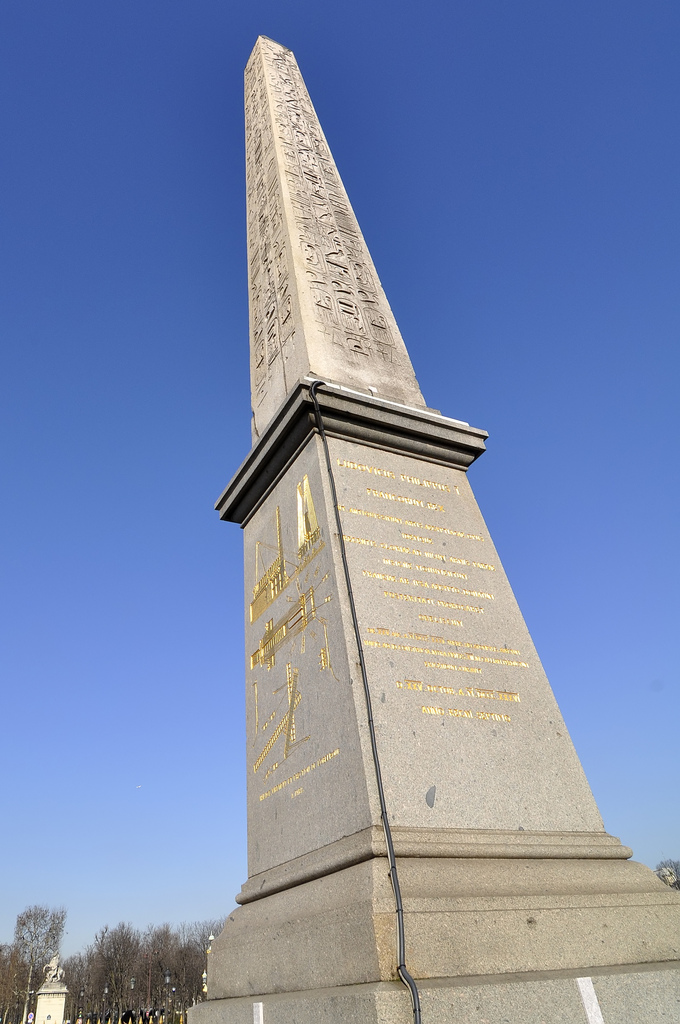
Place de La Concorde
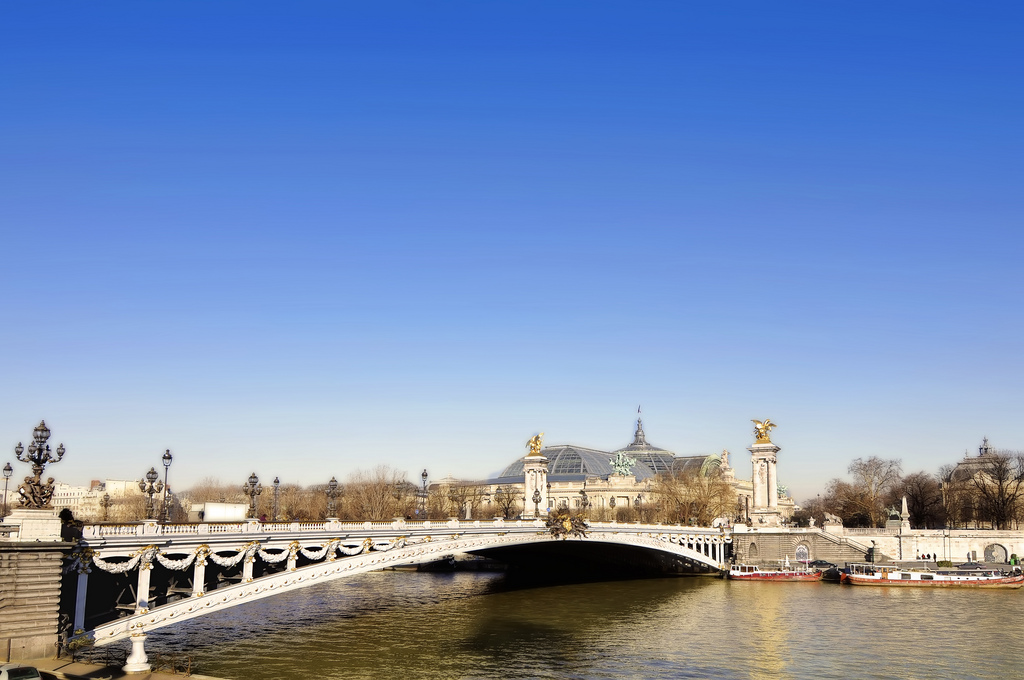
Pont Alexandre III
- Back to the Champs-Elysées, continue your way to the Arc de Triomphe. At the intersection with Avenue Winston Churchill, lies Place Clemenceau, which is recognizable by the statue of General Charles de Gaulle. Looking south, you will see the Hôtel National des Invalides in the far background, the Grand Palais on the right and the Petit Palais on the left.
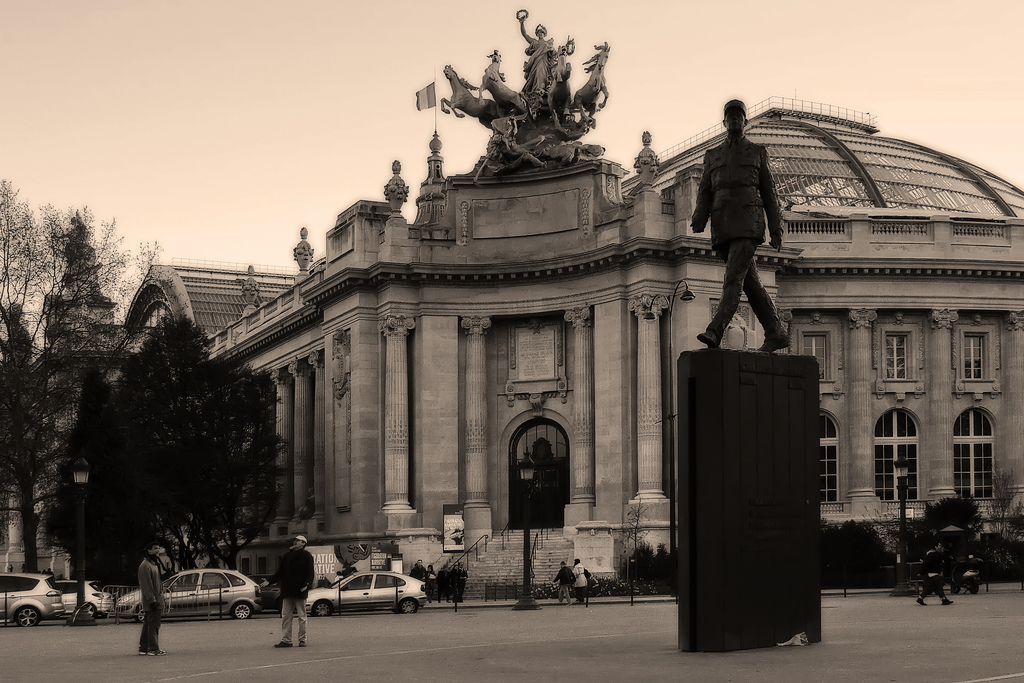
Place Clemenceau and Grand Palais
- Continue walking through the Champs-Elysées. You will pass through the luxury stores, restaurants and bars and end your walk at the Arc de Triomphe de l’Étoile.
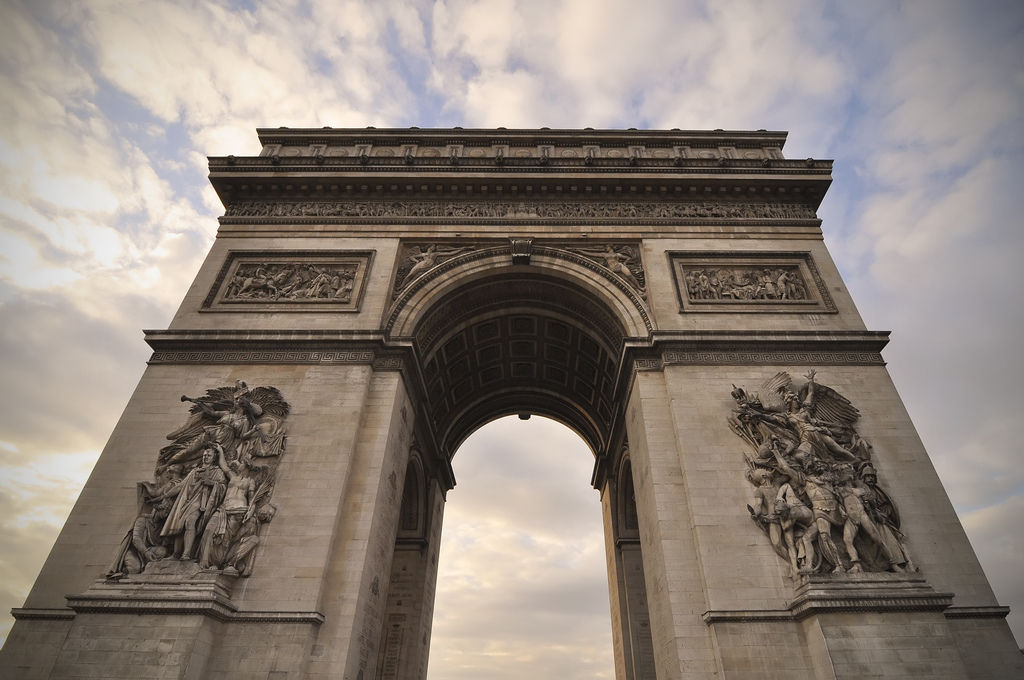
Arc de Triomphe de l’Étoile
That concludes the walk. From there, you have two options to continue exploring:
- Take the M1 (or RER A) to La Defénse, which is a large business district featuring interesting, modern architecture. Be aware of your tickets: the Metro lines are not ruled by the zone system, so you may use your zones 1-2 ticket to go to La Defénse (zone 3) using the M1. However, if you take the RER, you will need a zone 1-3 ticket, otherwise you won’t be able to leave the station.
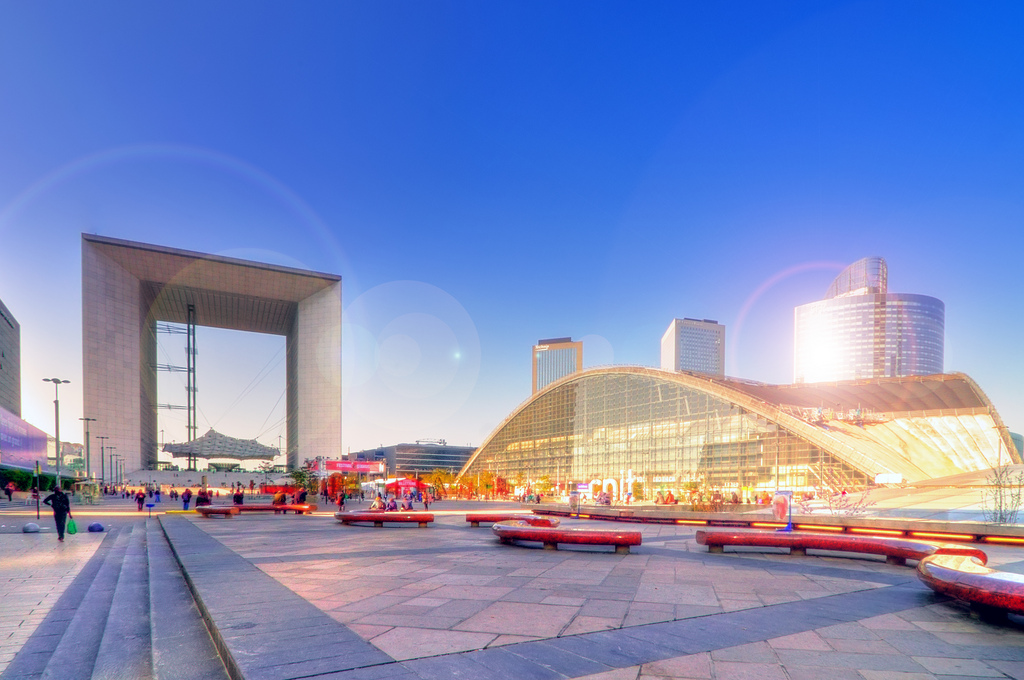
La Defénse
- Take the M6 to Trocadéro to see the Tour Eiffel.
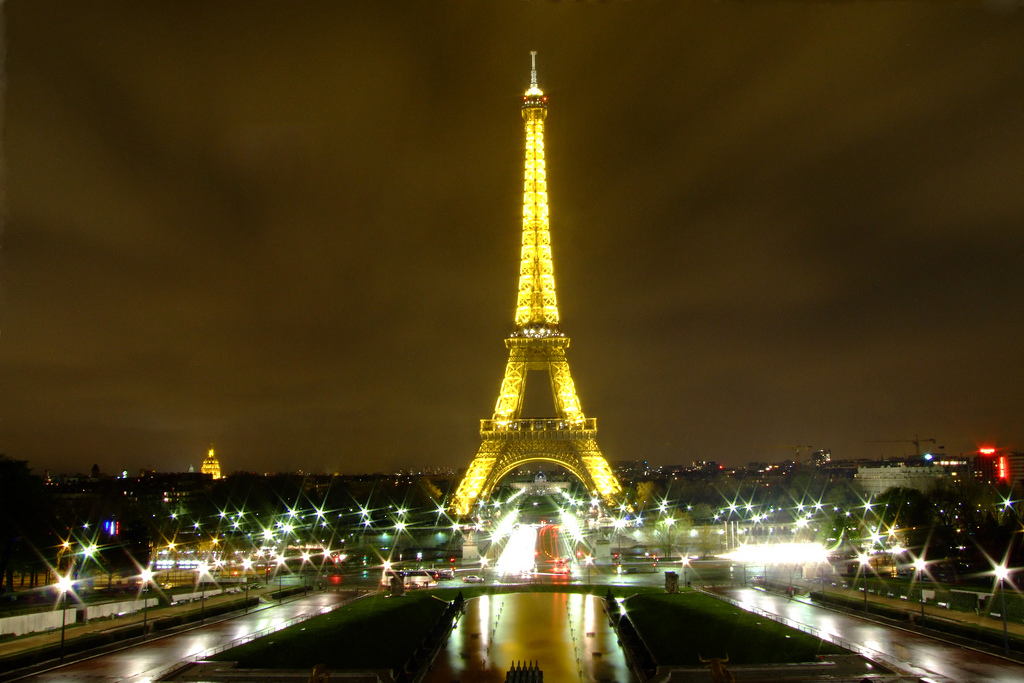
Tour Eiffel
This little guide covers almost all main landmarks of Paris. If it is your first time in the city, I highly recommend you to do this first. After that, you may start using the public transit system to get around faster.
Other landmarks worth seeing. I will provide more details in part 2 of this guide, in which I will drill-down each arrondissement:
- Palais du Luxembourg: home of the French Senate, next to the Jardin du Luxembourg. RER B, Luxembourg station.
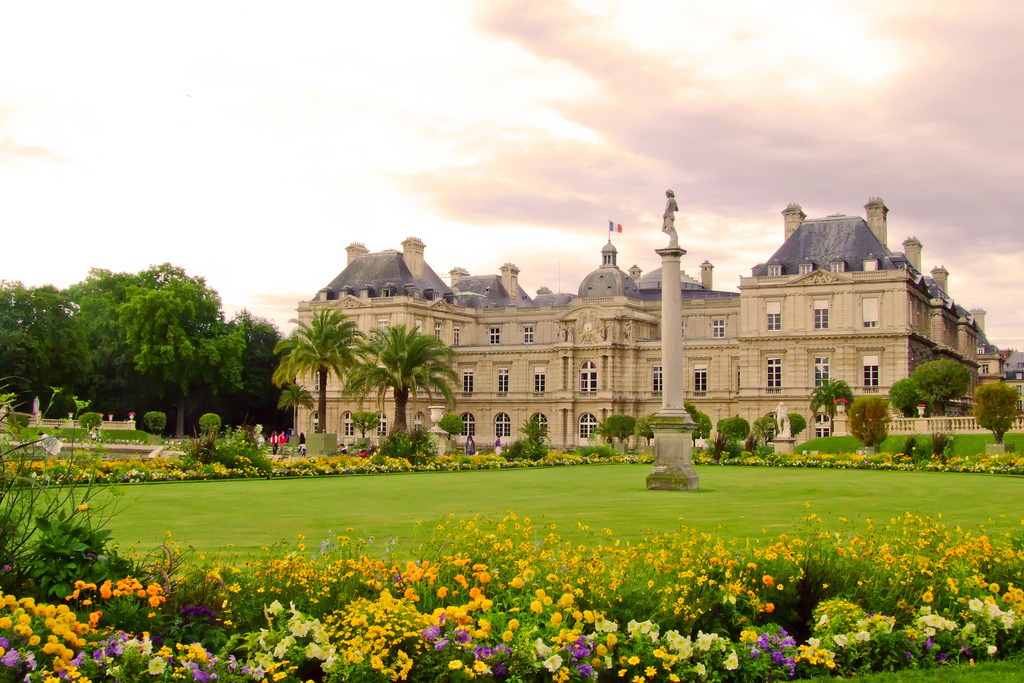
Palais du Luxembourg
- Panthéon: burial place of many notable French people, including Voltaire and Victor Hugo. M10, Cardinal Lemoine station, or RER B, Luxembourg station.

Panthéon
- Père-Lachaise cemetery: interesting cemetery, resting place of many important people, like F. Chopin, Oscar Wilde and Jim Morrison. M2 or M3, Père-Lachaise station.
- Opera Garnier: home of the Paris Opera. M3, M7 or M8, Ópera station.
- Basilique du Sacré-Coeur: a famous church at the highest ground in Paris. Offers stunning views of the city. M2, Anvers station.
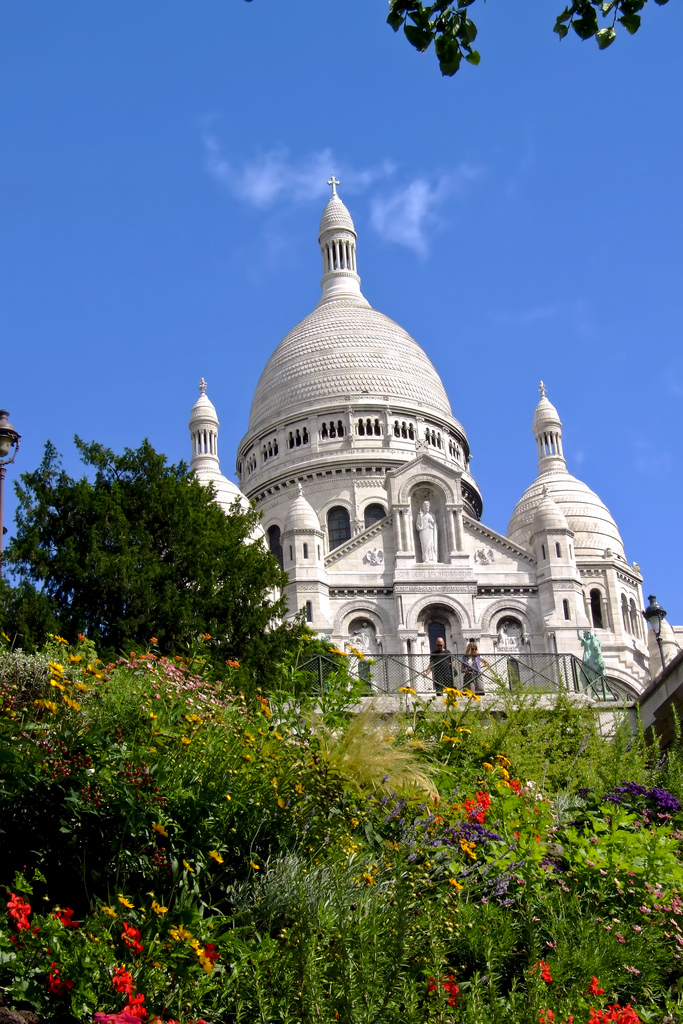
Basilique du Sacré-Coeur de Montmartre
- Sainte-Chapelle: another beautiful church. I personally think it is the most beautiful church in Paris. M4, Cité station.
Getting around Paris
In order to save time, you may want to use the public transit system. Paris offers you mainly 3 options:
- Metro: the subway system. As I mentioned earlier, the Metro is not ruled by the zone system. Therefore, if you intend to use only the Metro, you may buy zones 1-2 tickets. The Metro is handicap-enemy, so in case you need special facilities, I advise you to research in advance to avoid unpleasant surprises. The same goes for people who travel with heavy luggage. Also, during rush hour, some trains won’t run to the last station. If the train you are riding is going to stop earlier, an announcement will be made (in French, of course). The worst lines at rush hour are 1, 4, 9 and 13.
- RER: commuter train that connects Paris to other towns in the Île-de-France. These are enforced by the zone system, so pay attention to where you want to go — tickets are required to enter and leave the platforms. It is important to note that for trips to CDG, you should buy the specific ticket to the airport. Also pay attention to the direction of the train, since some lines have multiple branches. Express trains will skip some stations, so take a look at the announcement boards to verify if the train you are about to board will stop where you want to go. The worst lines at rush hour are A and B.
- Bus: not very useful, to be honest. However, most buses go to Montparnasse. So if you are staying in that area, they might be an option. I personally don’t like the bus due to traffic.
Pricing depends on how you buy your tickets. Single ride tickets for the subway cost €1.70; a bundle of 10, €13.70. I usually make a lot of rides on the subway, so a better option for me is the Mobilis for €6.80, which allows unlimited travel for a day. For a week or more, I recommend getting a Navigo pass. Please go to the RATP website for more information about prices.
In part 2 of this Paris guide, I will detail each of the arrondissements, providing information about hotels, restaurants, museums, landmarks and curious facts.
* all photos were taken by myself and can be see in my Flickr gallery.